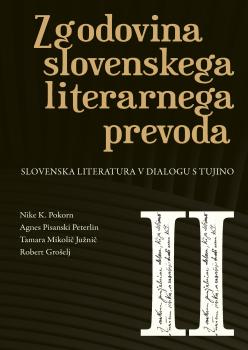Slovenski prevod v trku z glasbeno umetnostjo – prevajanje libretov, samospevov in popevk
Synopsis
The chapter sheds light on a hitherto little researched, but no less important and diverse Slovene translation practice, which is interwoven with the art of music. Starting with the chronology of translations as well as their respective genres, the chapter first discusses the beginnings of the translation of opera libretti and texts of popular arias and canzonas in the 18th century, and then introduces the most prominent translators of opera libretti in the 19th century under the auspices of the Ljubljana Dramatic Society (A. Funtek, M. Markič, A. Štritof, and others). Moreover, the spread of salon culture in the second half of the 19th century and the beginning of the 20th century led to a new era of translating poetry set to music in the genre of art song. The cultural policy of staging musical theatre works in Slovene continued well into the 20th century, with the translations of N. Štritof, S. Samec and P. Oblak standing out in both number and quality. The lively pulse of the translation of lyrics continued after the Second World War, especially in the popular song genre influenced by The Beatles and American rock’n’roll. The rich legacy of song translation established by D. Velkaverh, A. Mežek, T. Domicelj and others is continued by the youngest generation of song lyrics translators and music performers, although it differs both in poetic quality and in the choice of language genres. The final part of the chapter draws attention to translation studies on translation practice in the broader interdisciplinary context of music and literature, highlighting some new findings by contemporary researchers in addition to the translation strategies advocated by older authors.


